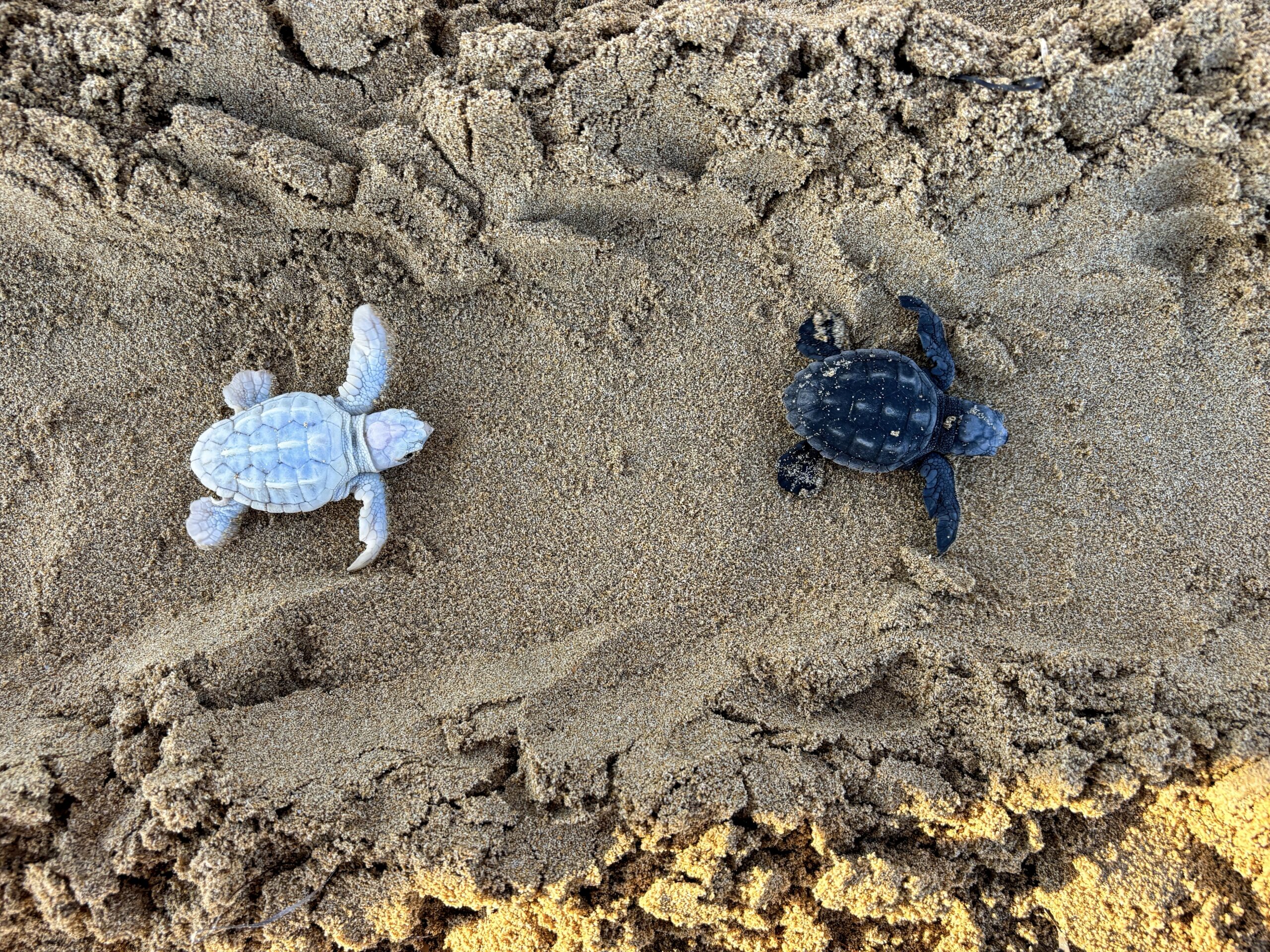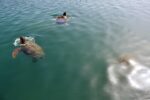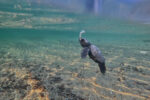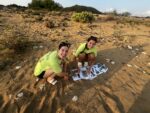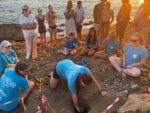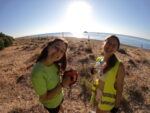Our Latest News- September 22, 2025
Argostoli Field Station
Over the last two weeks we have carried out two rescues in Argostoli harbour of injured turtles spotted during drone surveys. On Wednesday we came across a turtle swimming with a long line trailing out of its mouth and behind the turtle. The team acted promptly, taking this turtle out of the water for assessment. We discovered that the turtle had ingested a hook, and it was taken to the veterinarian, Spiridoula Vavasi, for further assessment. The second turtle had ingested a piece of packaging net, which we successfully and safely removed at the Harbour of Argostoli.
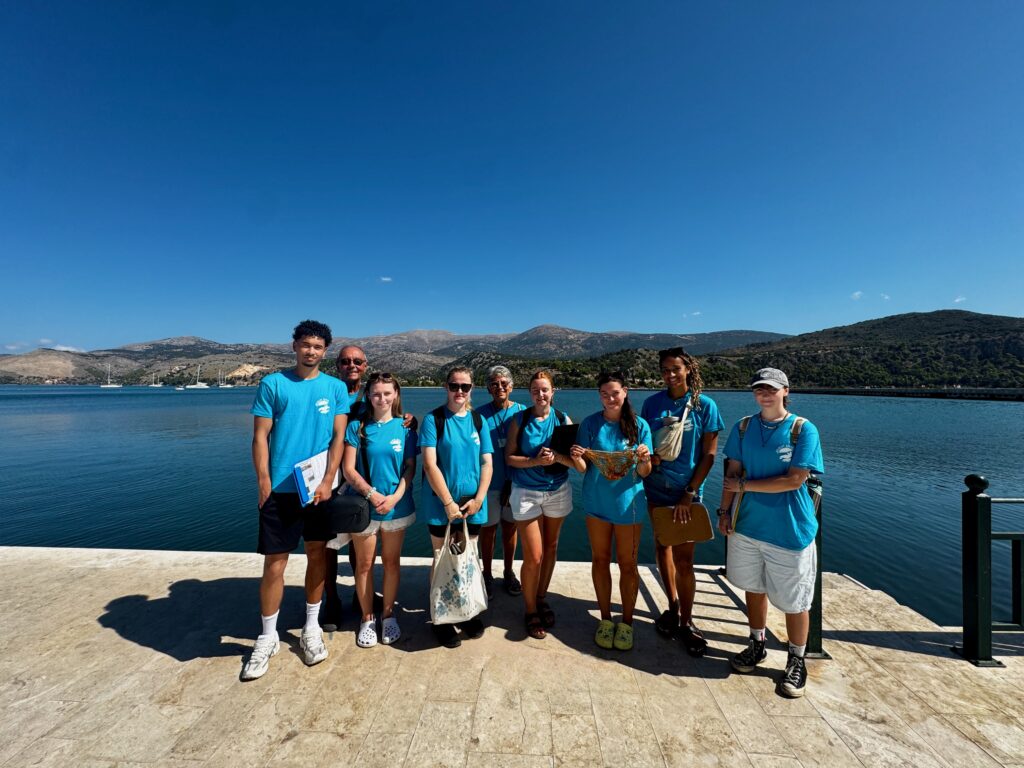
Hatchling season is still well underway, and as we said goodbye to our last volunteers, the new arrivals have quickly stepped into their shoes. We have had some exciting nests and busy days; safely releasing a very rare alive leucistic hatchling to sea (which occurs as a result of reduced pigmentation) and finishing nests on all but two of our beaches.
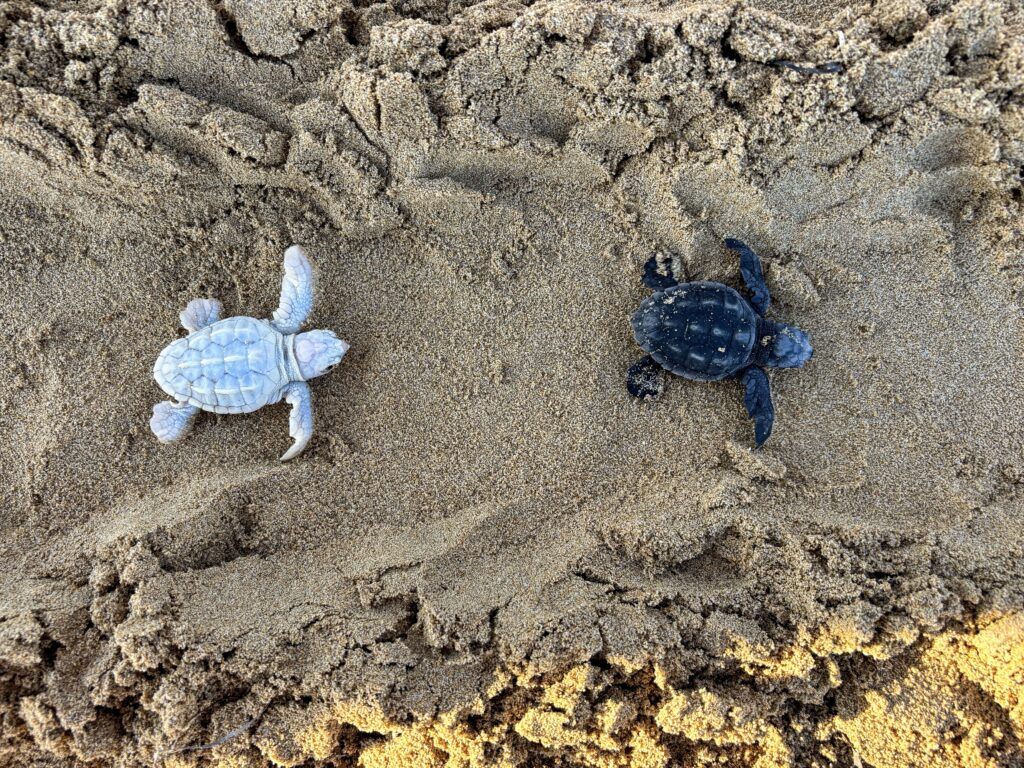
Our new group of volunteers are settling in well, carrying out crucial work helping our hatchlings to sea, day and night, and finding time to relax on site after long hard work by participating in lots of exciting activity nights.
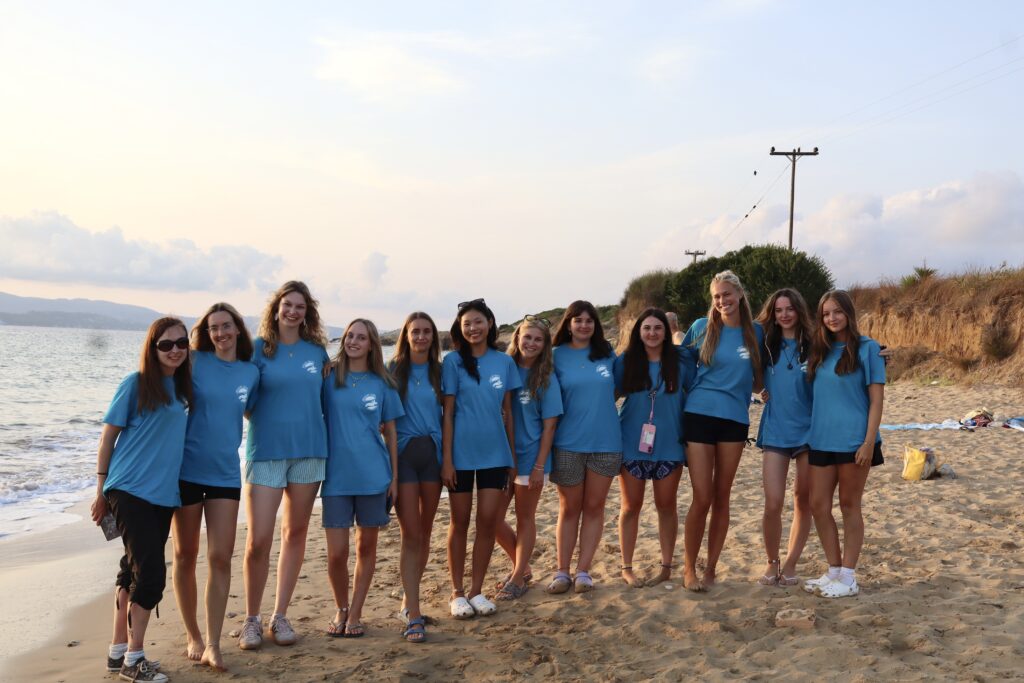
Skala Field Station
Here in Skala, we have just said goodbye to our small but mighty group of volunteers, who have worked extra hard over the past two weeks to collect data across both our survey sites. On their snorkel surveys, they took 2894 photos of the seafloor and spotted lots of sea creatures. During their sand dune surveys, our volunteers identified 15 different plant species, including 308 instances of Pancratium maritimum. This is positive news, as this plant is a protected species on the dunes of Kefalonia. A lot of effort was put into keeping our beaches clean during marine debris surveys, with our volunteers finding 56 cigarettes in just one transect on the Skala site. This is a busy tourist beach where lots of debris is often found, so collecting this data will help preventative measures be put in place to decrease these numbers. Now, our final group of volunteers have arrived and are excited to start their shifts after training day. We are looking forward to seeing the work this group does and what they get up to over the next two weeks!
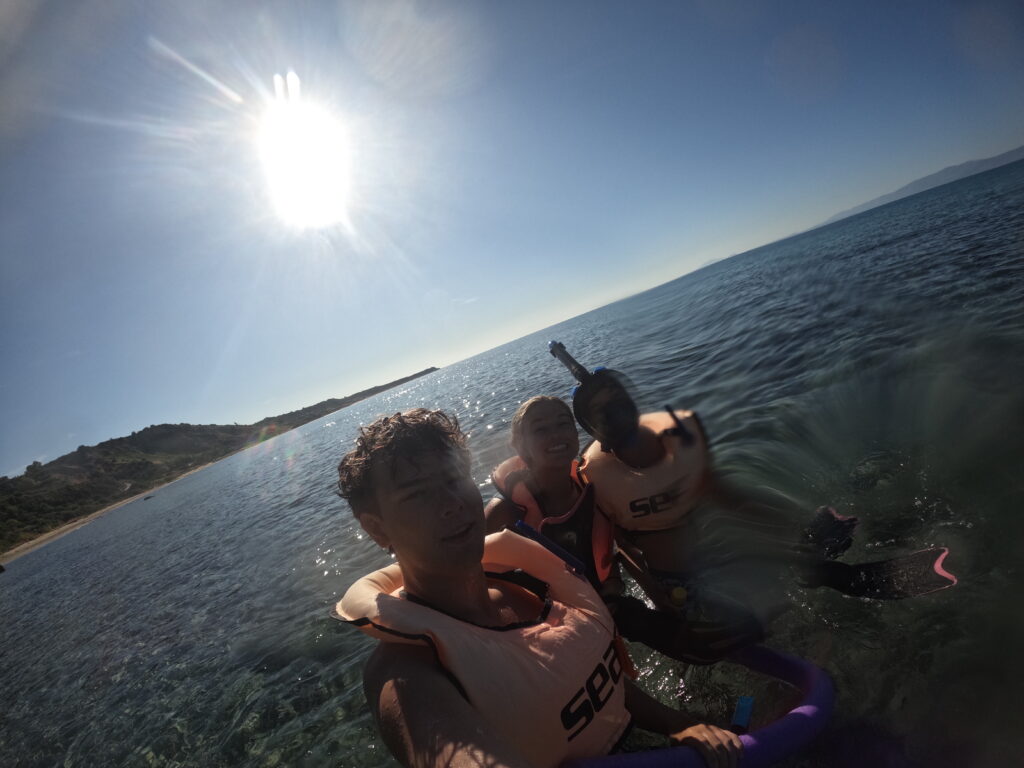
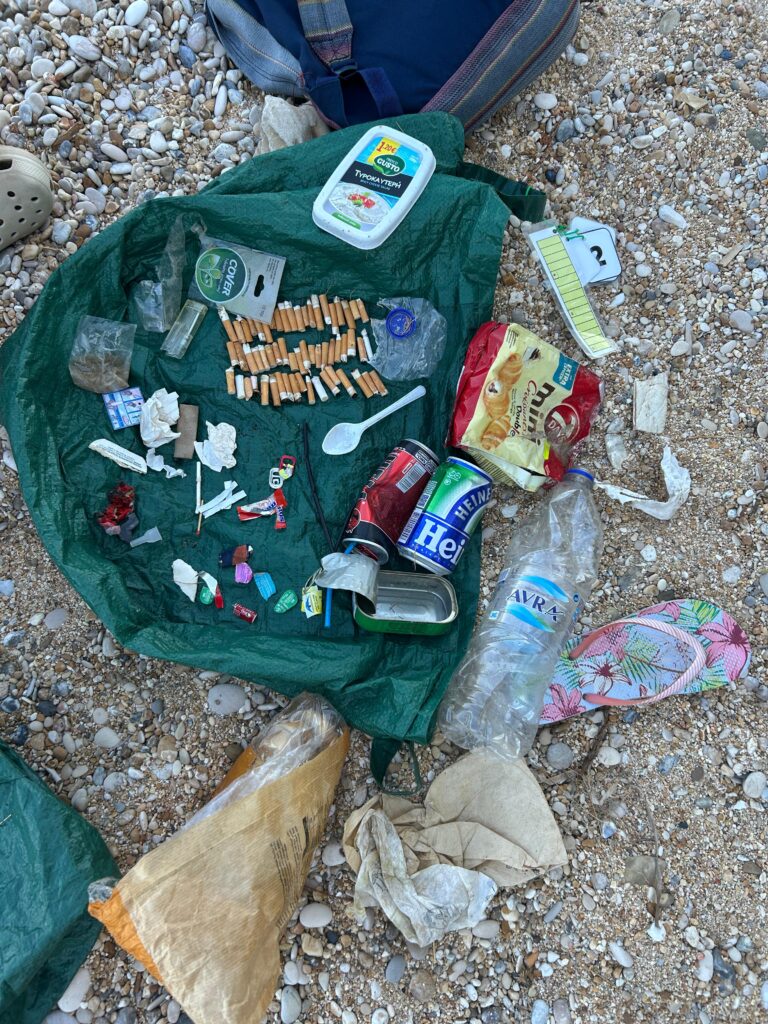
Svoronata Field Station
The past couple weeks have been all about breaking records. The volunteers enthusiastically completed a sand dune shift with a high of 68 quadrants! This is the highest amount of quadrants completed in one shift all season for Wildlife Sense. Not only was it the highest amount of quadrants completed, it was also done for the first time on a new beach which was freshly mapped and ready to be analysed. By completing this many quadrants in one shift, it took the total of quadrants completed in two weeks to over 280! Another record broken!
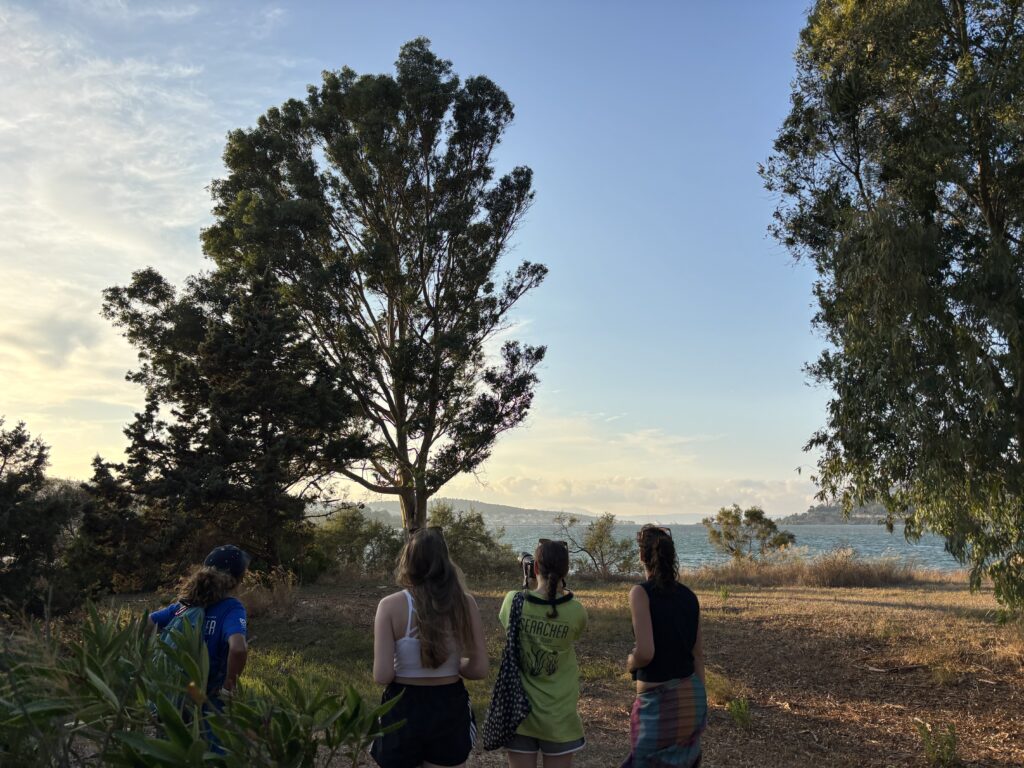
Snorkel surveys also had a record broken, with a total of 614 depth metre readings in two weeks. The volunteers are really smashing it! By having a large number of readings, it allows us to really identify where the posidonia is thriving, what depth it is thriving at and where we could potentially grow new shoots.
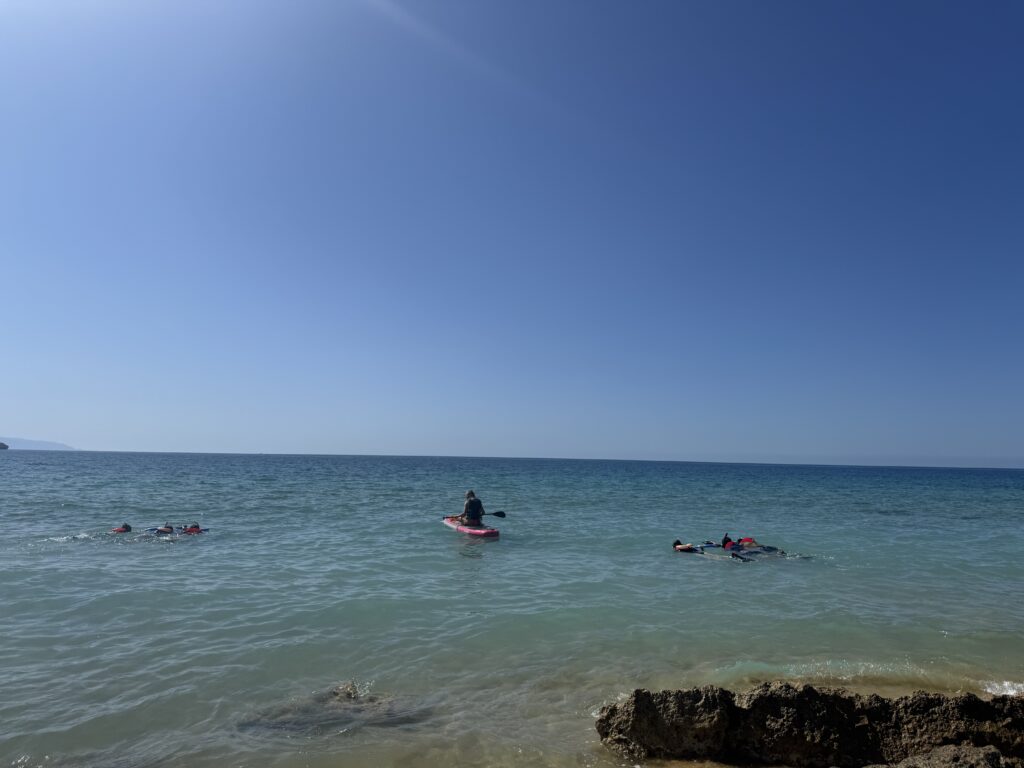
Another amazing thing that happened in the past two weeks was that we were able to photograph and identify a species we hadn’t yet seen. This being a Little Stint. They’re small birds that appear on shores and wetlands and can easily be confused for a Common or Green Sandpiper.
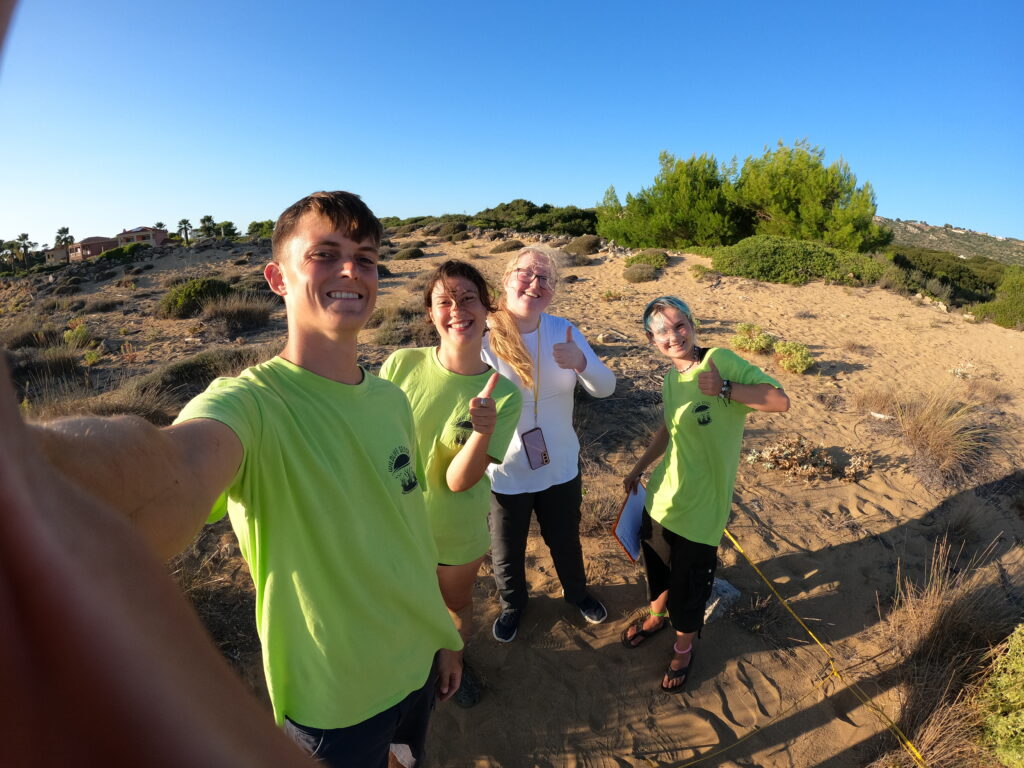
Lixouri Field Station
Over in Lixouri, we have just welcomed our last volunteer group of the year! Although we near the end of the hatching season and things are beginning to slow down, we still have an impressive number of hatchlings to help to sea – proving that our seasonal efforts have been a success! With only 8 nests remaining across our beaches, our field station is set to close for the winter at the end of this month once all nests have completed hatching. We will then prepare to reopen for the 2026 season!
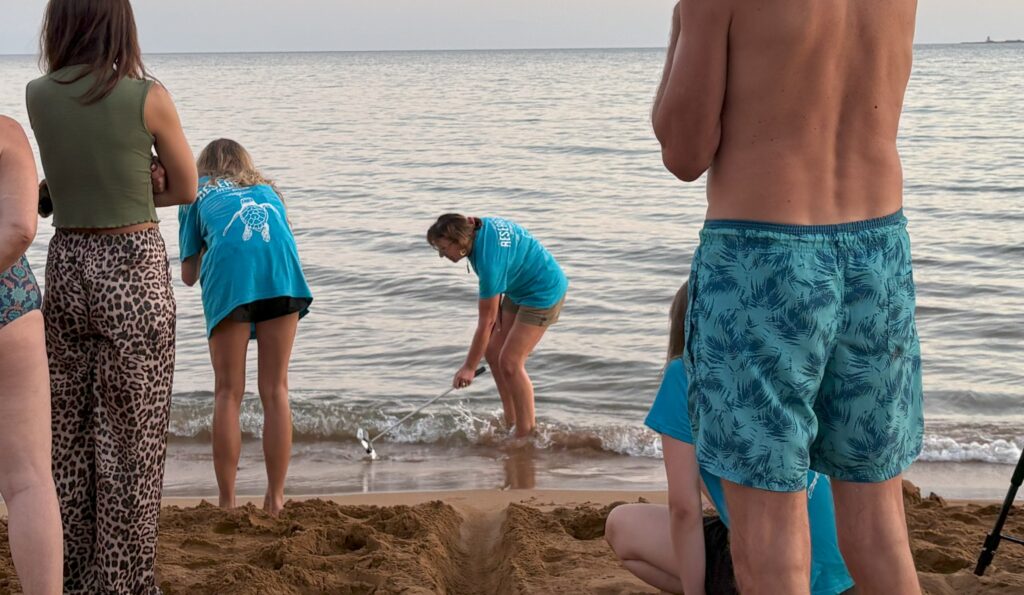
Last week we were lucky enough to welcome two researchers from the Paris Natural History Museum on an inventory on Megas Lakkos to evaluate the loco motor changes in hatchlings! Sea turtles are unique, as they make a quick transition from crawling on sand to swimming in water with the main aim of survival. This is an interesting example of the evolution of motor patterns in reptiles and even mammals! We feel very privileged that we were able to contribute to this study!
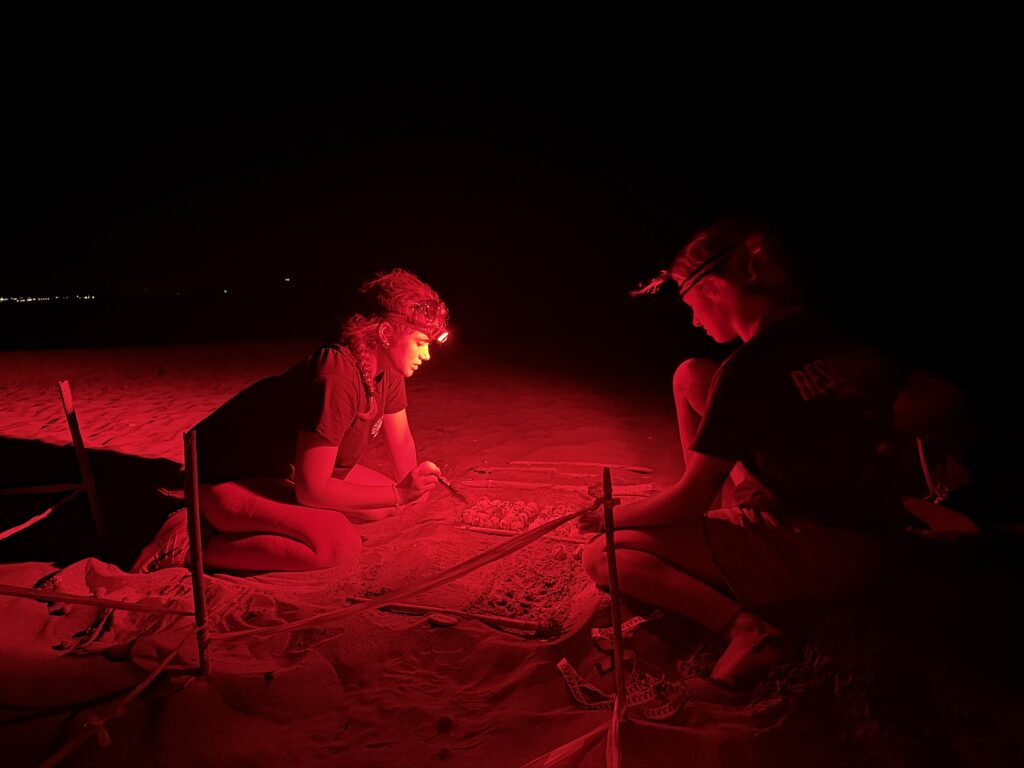
Incredibly, one of our nests on Cape Agios Georgios achieved a 100% hatching success! Every single egg laid in the nest hatched. This was a very special moment for our team and our volunteers as this level of success is not typically very common – and is one of just two nests across both Argostoli and Lixouri areas to achieve this during 2025 so far!
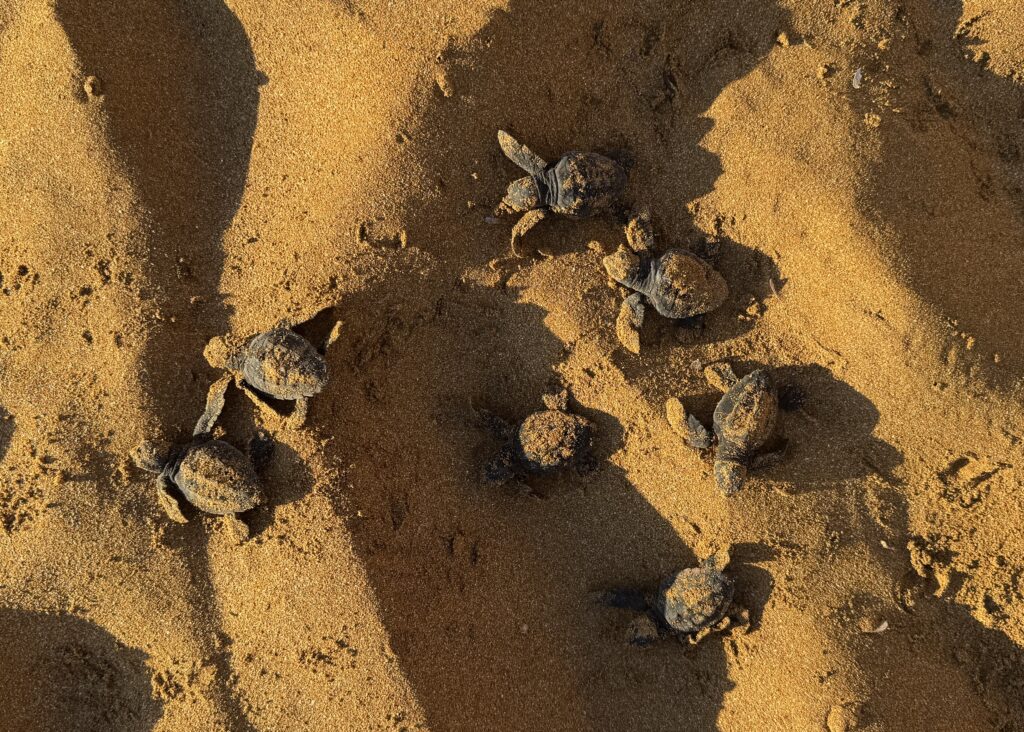
Education Program
Over the past two weeks, hatching season has progressed steadily in the Lourdas area and is now rapidly drawing to a close, with only 3 protected nests remaining on Kanali Beach. The team has been very pleased with how the nests have developed and hatched.
One particular highlight has been a nest originally laid on Lourdas and safely relocated to Kanali. Out of 106 eggs, an incredible 103 successfully hatched, which is a fantastic result!
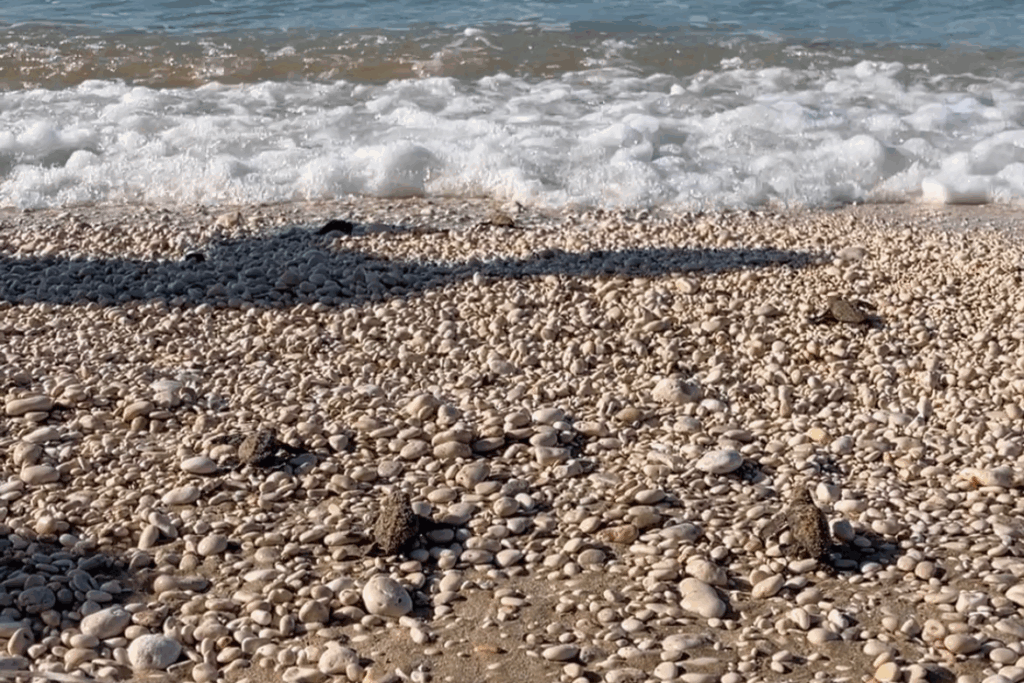
During morning surveys, our teams have had the privilege of meeting many kind, caring, helpful and respectful tourists. Each morning, small groups of tourists have generously assisted us in shading hatchlings as they made their way safely to the sea. From towels and t-shirts to umbrellas and sun beds, their creativity and willingness to help have made a real difference. We are sincerely grateful to all of you for your support and for giving up your time and your towel!

